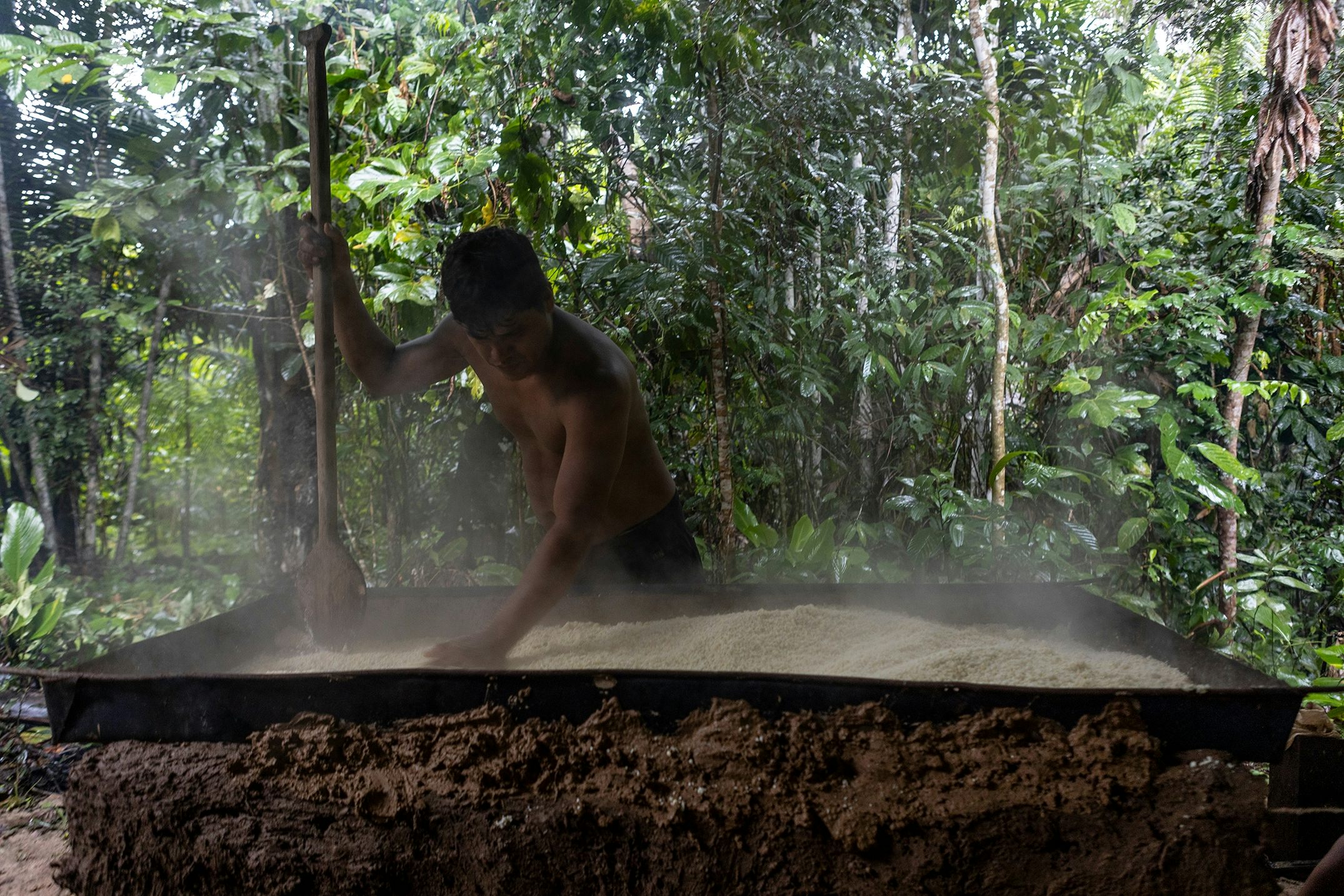By
The Amazon rainforest is idyllic. This environment, which lies on 40% of the South American region, is home to various ecosystems like flooded and seasonal forests, making it one of the most biodiverse places in the world. Such biodiversity, however, also makes it a complicated habitat to live in, where the geography and climate represent a challenge. For centuries, indigenous peoples have learned how to deal with these difficulties in order to live in harmony with their surroundings. These learnings include using just the necessary resources for food and building without generating stress on the rainforest. One of the most important knowledges for indigenous peoples is the process of transformation of both trees and food, the latter being extremely important to guarantee them food security.

Although there are many types of fruits, vegetables and tubers in the Amazon, one of the most important is the cassava. This root is a staple food for Amazonians across the region. Being a main source of carbohydrates, cassava has been grown by indigenous peoples for hundreds of years. It is consumed fried, boiled, fermented and grated. One of the most important qualities is its versatility to be transformed into products with a longer shelf life, essential for having food security. Among these transformations one that stands out is fariña. This sort of flour is one of the best ways to preserve the tuber. It is made by fermenting cassava and then grating it to very small pieces in order to reduce almost all the liquid. The grated cassava is then roasted and turned in a large tray over firewood for many hours. This process allows for the product to be stored for a longer time under hot weather conditions without it going bad. People eat fariña with fish, meats, as a drink when mixed with sugar and lemon, in soup and in multiple other ways.

Another derivation of cassava is tapioca. Similar to fariña, it is also extracted from yuca and turned into a starchy flour, flakes and tiny pearls. This flour serves a binder and thickener and can also be kept for a long time. Cassava can also be turned into a bread with a similar name: casabe. This very thin and crunchy flatbread is made with the flour and cooked in a “budare”, a typical tray that is placed over fire. It has been around since prehispanic times and, like fariña and tapioca, is essential for extending the useful life of this substantial ingredient.
Masato, a fermented drink made from chewed cassava, has a major cultural significance for indigenous peoples. Not only is it a symbol of friendship, but is part of their daily work, festivities, rituals. It is tradition that only women are the ones who masticate the cassava, which gives them a special place in the community. Masato is also inseparable from the different types of relationships that develop in the communities, from neighbors to family and friends. This drink is so important that it is usually offered to newcomers in communities as a welcoming.

Plantains are also a big part of indigenous peoples diets and, like cassava, can be cooked and transformed in different ways. One form of preservation is to turn it into flour, which is then used for cooking. It is also eaten as a side dish almost daily, be it boiled, made into chips, fried, grinded and rolled into a ball called “tacacho”, etc. Sweet plantains are used to make “chapo”, a sweet and hot drink that is usually served at breakfast.
Some leaves are used as kitchen elements. A good example is the huge bijao leaf, which serves as a wrap for grilling (what in Western cultures would be aluminum foil) and as a container for the most traditional Amazonian food: the juane.

In the Peruvian Amazon there are about 132 different types of palm trees. Unsurprisingly, they are an essential resource for indigenous peoples all over the rainforest, who have learned how to make the most of them. Besides providing fruits to be consumed, palms are used for as constructing and weaving material and the entire tree can be used. From the leaves, fiber is extracted and used for handicrafts such as arrows, baskets, mats, etc. These articles are used in daily life in the communities and also play an important role in their economy, as they are also souvenirs which are sold to visitors who arrive at the communities or to the nearby towns and cities. The leaves are also used to build roofs for houses. In an environment where rain falls all year round, this material is great to avoid water filtering. Palm leaves deflect the rays of the sun and do not sweat, maintaining a cool indoor atmosphere in a very hot environment. The trunks of the palm trees are also used, serving as beams, columns and wood for floors. Many of the house utensils can also be made from palm trees and their fruits, such as bowls and cutlery.
The importance of transforming these and other resources is such that the knowledge on how to do so has been passed down from generation to generation. At our center we are learning every day from members of the community and trying as much as possible to implement these traditions in pursuit of a self-sufficient life in harmony with nature. After all, we receive such abundance from this forest and its inhabitants, that it is only natural to reciprocate.


